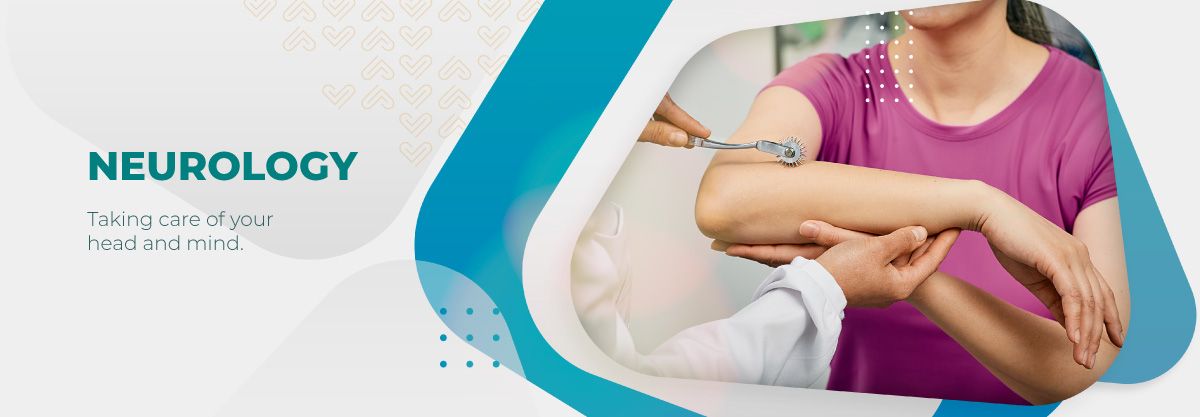Emergency Tel: 211 5157


- Home
- Specialities
- Neurology
Neurology

-
Alzheimer's disease
Alzheimer's disease is a brain disorder that gets worse over time. It's characterized by changes in the brain that lead to deposits of certain proteins. Alzheimer's disease causes the brain to shrink and brain cells to eventually die. Alzheimer's disease is the most common cause of dementia — a gradual decline in memory, thinking, behaviour and social skills. These changes affect a person's ability to function.
The early signs of the disease include forgetting recent events or conversations. Over time, it progresses to serious memory problems and loss of the ability to perform everyday tasks.
Medicines may improve or slow the progression of symptoms. Programs and services can help support people with the disease and their caregivers.
There is no treatment that cures Alzheimer's disease. In advanced stages, severe loss of brain function can cause dehydration, malnutrition or infection.
-
Aphasia
Aphasia is a disorder that affects how you communicate. It can impact your speech, as well as the way you write and understand both spoken and written language.
Aphasia usually happens suddenly after a stroke or a head injury. But it can also come on gradually from a slow-growing brain tumor or a disease that causes progressive, permanent damage (degenerative). The severity of aphasia depends on a number of things, including the cause and the extent of the brain damage.
The main treatment for aphasia involves treating the condition that causes it, as well as speech and language therapy. The person with aphasia relearns and practices language skills and learns to use other ways to communicate. Family members often participate in the process, helping the person communicate.
-
Seizures
A seizure is a sudden, uncontrolled burst of electrical activity in the brain. It can cause changes in behaviour, movements, feelings and levels of consciousness. Having two or more seizures at least 24 hours apart that don't have a known cause is considered to be epilepsy.
There are many types of seizures, and they have a range of symptoms and severity. Seizure types vary by where they begin in the brain and how far they spread. Most seizures last from 30 seconds to two minutes. A seizure that lasts longer than five minutes is a medical emergency.
Seizures can happen after a stroke or a head injury. They also may be caused by an infection such as meningitis or another illness. Many times, though, the cause is unknown.
Most seizure disorders can be controlled with medicine.
Generalized seizures
Seizures that appear to involve all areas of the brain from the time they start are called generalized seizures. Different types of generalized seizures include:
- Tonic seizures. Tonic seizures cause stiffening of the muscles. These seizures usually affect muscles in the back, arms and legs. People who experience these seizures may lose consciousness and fall to the ground.
- Atonic seizures. Atonic seizures, also known as drop seizures, cause a loss of muscle control. People having this type of seizure may suddenly fall down or drop their head.
- Clonic seizures. Clonic seizures are associated with repeated jerking muscle movements. These seizures usually affect the neck, face and arms on both sides of the body.
- Myoclonic seizures. Myoclonic seizures usually appear as sudden brief jerks or twitches of the arms and legs. There is often no loss of consciousness.
- Tonic-clonic seizures. Tonic-clonic seizures, previously known as grand mal seizures, are the most dramatic type of epileptic seizure. They can cause a sudden loss of consciousness, body stiffening and shaking. They sometimes cause people to lose control of their bladder or to bite their tongue. They may last for several minutes. Tonic-clonic seizures also may start as focal seizures that then spread to involve most or all of the brain.
-
Migraine
A migraine is a headache that can cause severe throbbing pain or a pulsing sensation, usually on one side of the head. It's often accompanied by nausea, vomiting, and extreme sensitivity to light and sound. Migraine attacks can last for hours to days, and the pain can be so severe that it interferes with your daily activities.
For some people, a warning symptom known as an aura occurs before or with the headache. An aura can include visual disturbances, such as flashes of light or blind spots, or other disturbances, such as tingling on one side of the face or in an arm or leg and difficulty speaking.
Medications can help prevent some migraines and make them less painful.
-
Parkinson’s disease
Parkinson's disease is a progressive disorder that affects the nervous system and the parts of the body controlled by the nerves. Symptoms start slowly. The first symptom may be a barely noticeable tremor in just one hand. Tremors are common, but the disorder may also cause stiffness or slowing of movement.
Parkinson's signs and symptoms may include:
- Tremor. A tremor, or rhythmic shaking, usually begins in a limb, often your hand or fingers. You may rub your thumb and forefinger back and forth. This is known as a pill-rolling tremor. Your hand may tremble when it's at rest. The shaking may decrease when you are performing tasks.
- Slowed movement (bradykinesia). Over time, Parkinson's disease may slow your movement, making simple tasks difficult and time-consuming. Your steps may become shorter when you walk. It may be difficult to get out of a chair. You may drag or shuffle your feet as you try to walk.
- Rigid muscles. Muscle stiffness may occur in any part of your body. The stiff muscles can be painful and limit your range of motion.
- Impaired posture and balance. Your posture may become stooped. Or you may fall or have balance problems as a result of Parkinson's disease.
- Loss of automatic movements. You may have a decreased ability to perform unconscious movements, including blinking, smiling or swinging your arms when you walk.
- Speech changes. You may speak softly, quickly, slur or hesitate before talking. Your speech may be more of a monotone rather than have the usual speech patterns.
-
Stroke
An ischemic stroke occurs when the blood supply to part of the brain is interrupted or reduced, preventing brain tissue from getting oxygen and nutrients. Brain cells begin to die in minutes.
A stroke is a medical emergency and prompt treatment is crucial. Early action can reduce brain damage and other complications.
Signs and symptoms of stroke include:
- Trouble speaking and understanding what others are saying. You may experience confusion, slur words or have difficulty understanding speech.
- Paralysis or numbness of the face, arm or leg. You may develop sudden numbness, weakness or paralysis in the face, arm or leg. This often affects just one side of the body. Try to raise both your arms over your head at the same time. If one arm begins to fall, you may be having a stroke. Also, one side of your mouth may droop when you try to smile.
- Problems seeing in one or both eyes. You may suddenly have blurred or blackened vision in one or both eyes, or you may see double.
- Headache. A sudden, severe headache, which may be accompanied by vomiting, dizziness or altered consciousness, may indicate that you're having a stroke.
- Trouble walking. You may stumble or lose your balance. You may also have sudden dizziness or a loss of coordination.
Doctor Schedule
Doctors scheduled for the week.
|
Monday & Wednesday
|
11hr - 13hr | Dr (Mrs) Lata Oaris |
| Monday & Wednesday | 11hr - 13hr | Dr Ganeshan Yagasoonclaren |
Doctors and Specialists of Neurology
Contact Us
-

4, Labourdonnais Street,
Port-Louis -

(230) 211 5157
(230) 211 5181
(230) 211 7559 -

(230) 211 4647
Follow Chisty Shifa Clinic
Patients
Publications
Terms & Conditions | Privacy Policy | COPYRIGHT © 2022 Chisty Shifa.
All rights reserved. Powered by Nova Interaction


